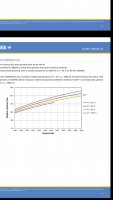- Thread starter
- #21
Mars Hydro
420 Sponsor
And I am lucky to been here,...again...agreed......and MH is very lucky to have Sara here as a rep!...for nearly 6 years, she has been nothing but great for the company...both in promotion and absorbing criticism...sometimes warranted...often not!...if I ever make it to China(prolly not the best idea right now...
) I'll buy her a beer/saki...
...cheerz...h00k...
...












 ...thank you both for the response's...
...thank you both for the response's...

 ), but I now prefer frugal!
), but I now prefer frugal!
 ...lolool...got a couple months before I fire up the 2019 grow, and will be processing info towards better lighting...cheerz...h00k...
...lolool...got a couple months before I fire up the 2019 grow, and will be processing info towards better lighting...cheerz...h00k...
 ...cheerz...h00k...
...cheerz...h00k...